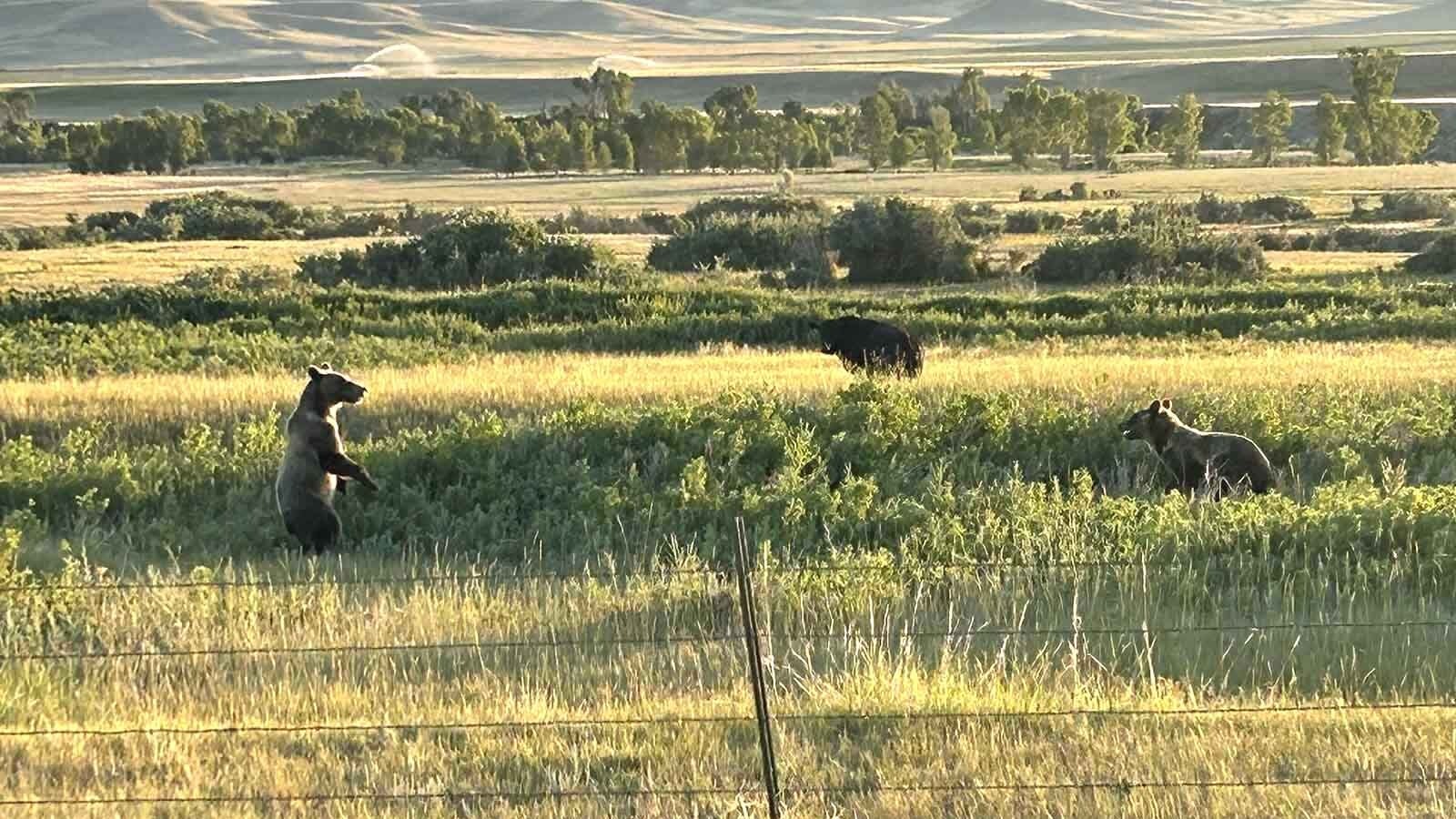Late on a frigid afternoon in December 2020 near Evanston, Elizabeth Schoultz anxiously awaited what she hoped would be the successful culmination of a three-week quest in Wyoming.
A young golden eagle had flown in for the sheep carcass she’d left as bait for a safe loop trap, designed to catch the raptor by its leg.
“He hopped off the carcass and then, ‘boom!’ Within a minute he was flapping and flailing,” Schoultz, who lives in eastern Pennsylvania, told Cowboy State Daily.
It was a good catch, and exactly the eagle she wanted, which had already escaped a previous trapping attempt.
Program Helps Sheep Ranchers
Falconry is the art of bonding with and training raptors such as hawks, falcons and eagles to hunt. In Wyoming, it’s regulated by the Wyoming Game and Fish Department, which has falconry hunting seasons for small game, upland birds and waterfowl.
Schoultz has been active in falconry since 2000. She spent several years earning certification as a master eagle falconer. That included taking trips to central Asia and the Czech Republic to share knowledge and hunt with some of the world’s best falconers in places where the tradition stretches back for centuries.
She’s particularly interested in golden eagles, one of the first raptor species humans began hunting with.

Legal Eagles
There are three ways to legally acquire a golden eagle in the United States, Schoultz said. They may be trapped by qualified falconers through a sanctioned trapping program or gifted between falconers. Or one falconer can agree to let another temporarily foster an eagle.
“They can’t be bought or sold, because that’s illegal,” she said.
Permitted falconers also may help rehabilitate injured eagles to prepare those raptors for release back into the wild.
Lamb’s On The Menu
Golden eagles sometimes attack sheep in Wyoming, particularly lambs. The Game and Fish facilitates the program through which falconers may live-trap eagles in areas where sheep depredation has become a problem. Only six trappings per year are allowed, and only juvenile eagles that haven’t yet paired with a mate may be trapped.
The program runs on a “lottery system,” Schoultz said. So, she felt extremely fortunate when she drew a permit for the 2020 tapping season.
She hoped to catch an eagle that had been hatched that spring. By December, such an eagle would have had time to gain its flight skills and some independence.
‘Hard To Compete’ With Roadkill
The task of trapping the right eagle proved frustrating at first, Schoultz said. That’s because a two-lane highway in the area where she and her helpers were seeking an eagle was rife with fresh roadkill, everything from rabbits to deer and antelope that had been struck by speeding vehicles.
Though they are awesome hunters, golden eagles also will take advantage of carrion when it’s available, Schoultz said.
“With that abundance of roadkill, we were trying to figure out, ‘How do you compete with that?’” she said.
Schoultz had spotted a young eagle that fit what she was looking for and noticed that it like to perch on a particular telephone pole.
The plump carcasses of domestic meat rabbits enticed it into her trap once, and she thought she’d caught it. But apparently the looped closed on only one of its talons that time, because the young raptor pulled free and flew away before she could reach it.
A local rancher provided her with some carcasses of sickly sheep he’d had to euthanize. That proved to be irresistible bait and, at last, a successful catch.
‘That’s Falconry’
Approaching a trapped eagle might sound like a daunting a task to the uninitiated. And it takes ample knowledge and training for a person to know how to secure a trapped eagle without either party getting seriously hurt, Schoultz said.
“That’s falconry,” she said.
The key is knowing how to secure the wings and talons to get a hood over the bird’s head. In addition to their beaks and talons, eagles can inflict injury by “boxing” a perceived threat with their wings, Schoultz said.
When blinded by hoods, raptors calm down.
Once the eagle was secured, Schoultz wasted no time getting it settled into the back seat of her crew cab Toyota Tacoma for the three-day drive home.
Only One Poop Mishap
Schoultz had set up a plywood platform and a perch in the back seat. She had lined the platform with “big baby diapers” for when the eagle had to relieve itself.
She kept a hood and anklets on the eagle, but otherwise it was free inside the cab.
“He could sit on his perch, extend his wings and fully turned around,” she said.
The young raptor turned and “pooped on the front seat” only once during the journey. Otherwise, everything landed on the diapers, she said.
“With falcons, the poop can really shoot out, but eagles just lift their tails and go,” Schoultz said.
The eagle was calm during most of the travel. Although, Schoultz said that the first few times she got back into the truck after a rest stop the sound would alarm the eagle and “he’d box me with his wings.”
During the first night in what Schoultz described as a freezing cold motel room, the eagle hopped off its perch and “bumped into the wall,” but that happened only once, she said.
Wyoming Eagle Enjoys Good Life
When naming her raptors, Schoultz likes to spend time with them and intuitively figure out what they should be called.
“It’s like you’re asking, ‘What is your name? What should I call you?’” she said.
She settled on two names, Aairean came first. But then P.D. – short for Prehistoric Demon – also seemed fitting.
Over the past two years Schoultz and P.D. have developed a relationship she describes as one of mutual trust.
“At first, he did not want me to touch his head and beak at all,” she said.
Once over his initial fear of touch, P.D. would like to “touch back” with his beak, she said. But he had to learn to do it softly and carefully so as to not pierce Schoultz’s skin.
“He did draw blood a few times,” she said.
Wildlife Diseases Dampen Hunting
P.D. took well to hunting, she said. Pennsylvania has abundant cottontail rabbit and waterfowl hunting opportunities.
Unfortunately, hemorrhagic disease in rabbits and bird flu in ducks have dampened opportunities this year, she said. Both of those diseases are transmittable to eagles and can prove fatal.
“All it would take is hitting the wrong rabbit or the wrong duck, and I’d have something really serious to deal with,” Schoultz said.
So for now, P.D. is “hunting” a lure fashioned from a swift, small remote-controlled car pulling something made up somewhat like a rabbit.
P.D. is “thriving” in his new home, weighing in at a robust 8.5 pounds, Schoultz said.
Male golden eagles are smaller that females, typically weighing 5-9 pounds. Females typically weigh 7-11 pounds.
“He’s extremely happy here,” Schoultz said. “He’s just the sweetest boy.”





